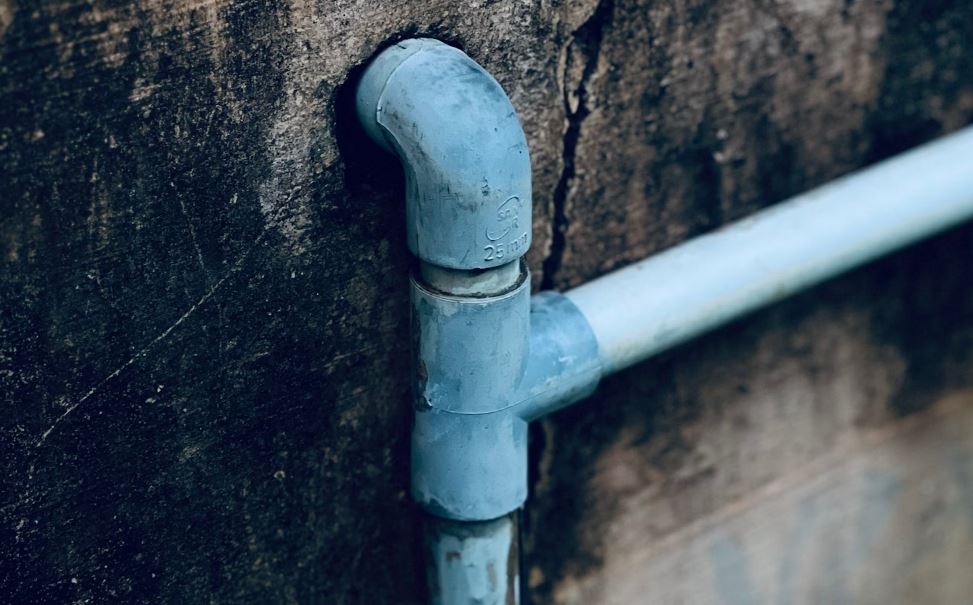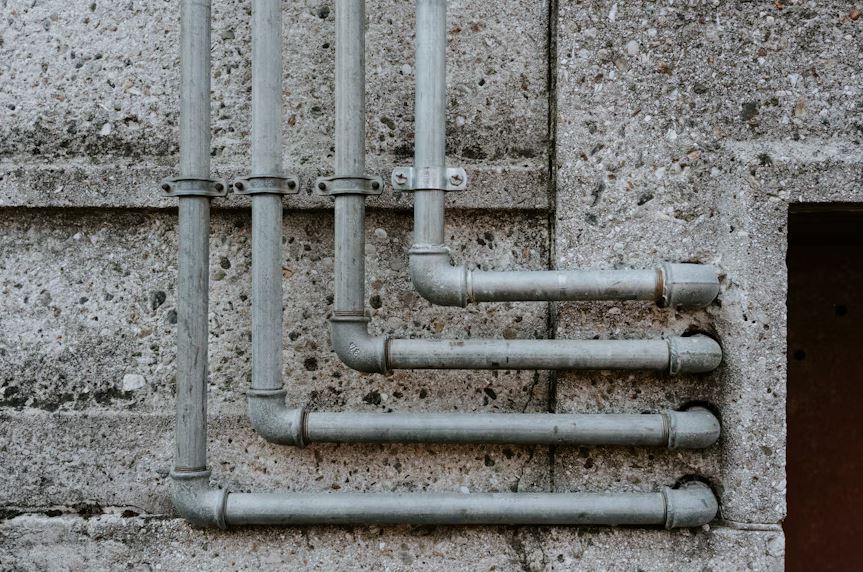If you’re diving into a DIY plumbing project, you might’ve found yourself wondering if you can use PVC glue on CPVC pipes.
It’s a fair question, after all, both materials look similar, and they both serve similar purposes. But using the wrong adhesive can cause some serious headaches down the line.
In this post, we’ll explain if it’s safe to use PVC glue on CPVC.
What’s The Difference Between PVC And CPVC?
Let’s start here, because the confusion usually begins with these two looking so similar.
PVC stands for polyvinyl chloride. It’s a rigid white plastic pipe, most commonly used for cold water lines, drain lines, and vent systems. You’ll find it in irrigation setups, pool plumbing, and all kinds of general water handling.
Then there’s CPVC which is chlorinated polyvinyl chloride. It’s basically PVC with some extra chlorine added during manufacturing.
That might not sound like much, but it makes a big difference. CPVC can handle higher temperatures, which is why it’s used for hot water lines.
Also Read: Using Plumber’s Putty On PVC
It’s also usually cream, off-white, or sometimes light yellow in color.
In short:
- PVC is great for cold water and outdoor use.
- CPVC is better for hot water and high-pressure situations.
So even though they’re cousins, they’re not interchangeable. And that matters a lot when it comes to glue.

Can You Use PVC Glue On CPVC?
You should not use PVC glue on CPVC pipes, because PVC glue is made to bond with PVC plastic, which has different properties compared to CPVC.
PVC glue typically contains a solvent that works well with PVC’s chemical structure, but it doesn’t bond effectively with CPVC. CPVC pipes require a special solvent cement that is specifically designed to handle the different composition of CPVC.
So what you end up with is a kind-of bond. It might hold for a little while. It might even look fine. But under pressure, heat, or just time, it’s gonna fail.
So, don’t go reaching for that PVC glue when you’re working with CPVC.
What Happens If You Do Use PVC Glue On CPVC?
So what could go wrong if you accidentally use PVC glue on CPVC?
Well, there are a few things to consider:
Incompatible Bonding
PVC glue is made to work with PVC’s specific chemical makeup. CPVC, with its additional chlorination, doesn’t respond well to this glue.
The bond between the glue and the CPVC pipe will be much weaker and less reliable.
You might get a temporary bond that seems fine at first, but over time, it can fail, especially under the pressure of hot water or the weight of a plumbing system.
Also Read: Can You Bury PEX Pipes?
Weak Joints
When you use PVC glue on CPVC, the joint you create will be much weaker than if you had used the correct CPVC adhesive.
If you’re doing plumbing work, weak joints are definitely not something you want.
The connection could give way under the water pressure, causing leaks, which brings us to our next point…
Risk Of Leaks
One of the biggest issues when using PVC glue on CPVC is the risk of leaks.
A weak, improperly bonded joint can develop tiny cracks over time, which might not be obvious at first. But as the pressure builds up, those cracks could get bigger, and the water could eventually find its way through.

At best, you’ll notice water pooling around your pipes. At worst, you could end up with a full-blown plumbing disaster that’s both costly and time-consuming to fix.
It Violates Codes
Using the wrong glue is a code violation in most places too.
Plumbing codes are there for a reason. If you use PVC glue on CPVC pipes, you’re likely violating local plumbing codes.
If an inspector finds PVC cement on a CPVC pipe, they’re going to flag it. That can mean failing inspection or having to rip out the work and start over.
It’s just not worth the risk!
It Voids Warranties
Most manufacturers specify what adhesives should be used with their pipes.
If you use the wrong glue, you could void the warranty on your CPVC pipes. In some cases, you might even be on the hook for replacing the pipes yourself if something goes wrong.
Using the right product is one of those simple steps that can save you a ton of stress later on.
Also Read: Knocking Pipes When Water Is Not Running
What About Connecting PVC To CPVC?
You can connect the two types of pipes, but you can’t just use the same adhesive for both.
There’s a special product called transition cement, which is designed for this exact job.
Transition cement contains a blend of the solvents that work with both PVC and CPVC, allowing you to make a solid bond between the two.
It’s super important to get this right, though. If you use regular PVC or CPVC glue on a connection like this, you’re in danger of weak joints, leaks, and other issues.
Common Mistakes To Avoid
If you’re doing your own plumbing or even just making a repair, here are a few common slip-ups people make:
- Grabbing the wrong glue because the cans all look the same. Read the label every time.
- Skipping the primer, which helps soften the surface for a stronger bond. Not all cements need it, but a lot do.
- Not cleaning the pipe ends before applying glue. Dust, water, or grease can ruin the bond.
- Rushing the cure time. Cement takes time to fully set, and moving water through too soon can break the bond before it hardens.
None of these are complicated to avoid, but they can all lead to bad connections if overlooked. Just taking an extra minute to double-check your materials and read the label goes a long way.
Bottom Line
You cannot use PVC glue on CPVC pipes. The bonding won’t be strong enough, and you could end up with weak joints, leaks, and even voided warranties.
The best way to get a solid, leak-free connection is by using the right adhesives for the job.
For CPVC, use CPVC solvent cement. For PVC, use PVC glue. If you’re connecting PVC to CPVC, don’t skip the transition cement.



